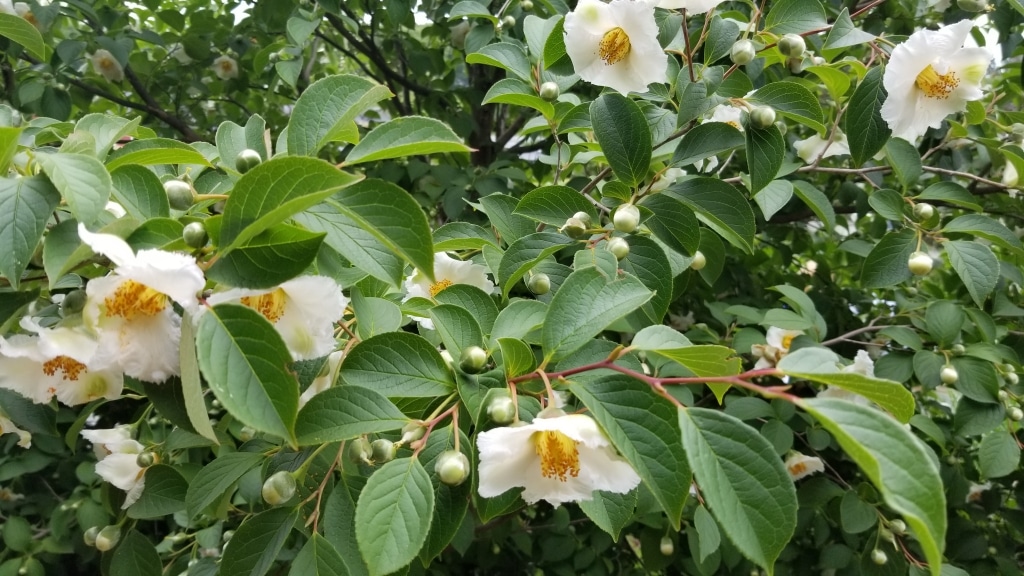
Once the Stewartia in my front yard starts to bloom in late June, I know summer has truly begun. A Cary Award winning tree, it is a reliable performer in this region with superb features and few pests. Easy to establish in your garden, it needs little or no care, and provides decades of enjoyment. Few winter hardy trees can rival the Japanese Stewartia (Stewartia pseudocamellia) for appeal this time of year, and its unique multi-season features add significant value to your landscape all year round.
In May Stewartia’s crisp, lustrous foliage emerges with bronzed tones, turning dark green by summer, followed by colorful orange, red, purple and yellow fall colors. Every day over several weeks from late June well into July, ruffled 2” diameter camellia-like (hence its name) nodding white flowers open successively along the stems. Interestingly, although each golden-yellow-centered blossom is open only a single day on the tree, the spent flowers always land face-up as they drop to the ground, creating a unique “bloom” effect on the ground beneath.
During the dormant seasons, starting when its October foliage drops, Stewartia’s distinctive bark features take center stage for the next 6 months until new buds again emerge in spring. The trunk and larger branches exfoliate, exposing mottled plates of pale orange, green and gray, creating a striking effect. These colors contrast robustly with winter’s snow or when grown against a darker background. For an even more impressive effect, try allowing the lower branches grow and arch-up naturally rather than pruning into a single trunk.
Stewartia grows well in full sun and partial shade and appreciates humusy, evenly-moist soil. Upright growing when young, it broadens a bit as it grows, reaching 25-30 ft. at maturity. It is a perfect centerpiece for a formal or patio garden, equally at home in a naturalistic planting. Because of its narrow, upright habit, interesting branching and year-round charm, it is a spectacular choice for lining a walkway, framed on both sides, and planted 10-15 ft. apart.
This is an underutilized tree that deserves to be up front in the landscape where its exquisite beauty can be appreciated every day all year long.
Wayne Mezitt is a 3rd generation nurseryman, a Massachusetts Certified Horticulturist, now chairman of Weston Nurseries of Hopkinton, Chelmsford & Hingham MA, and owner of “Hort-Sense”, a horticultural advisory business. He currently serves in various capacities on several horticulturally-related organizations, including the Massachusetts Horticultural Society at The Gardens at Elm Bank in Wellesley MA, and chairman for the Massachusetts Invasive Plant Advisory Group (MIPAG).









